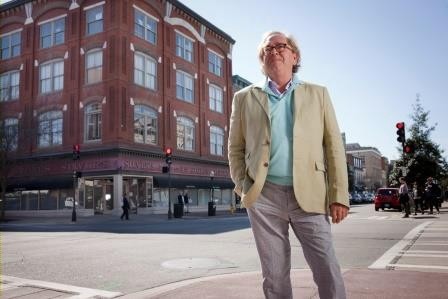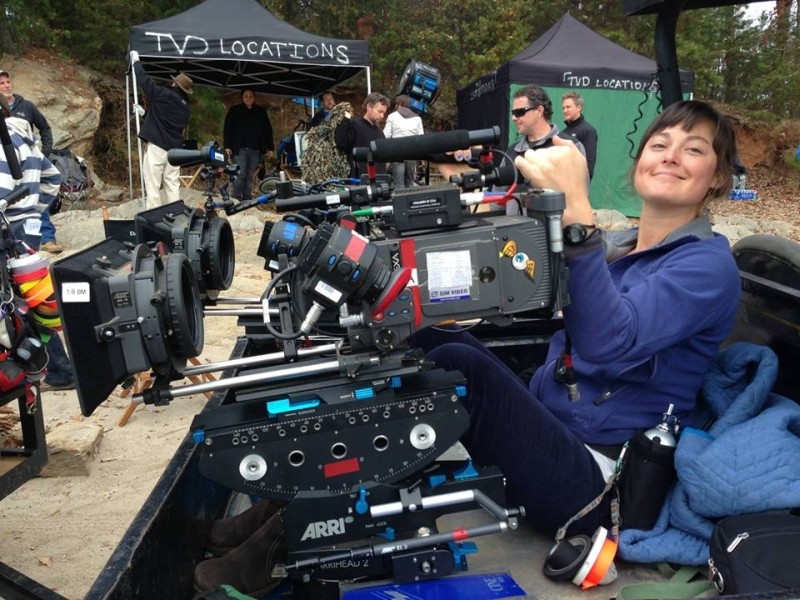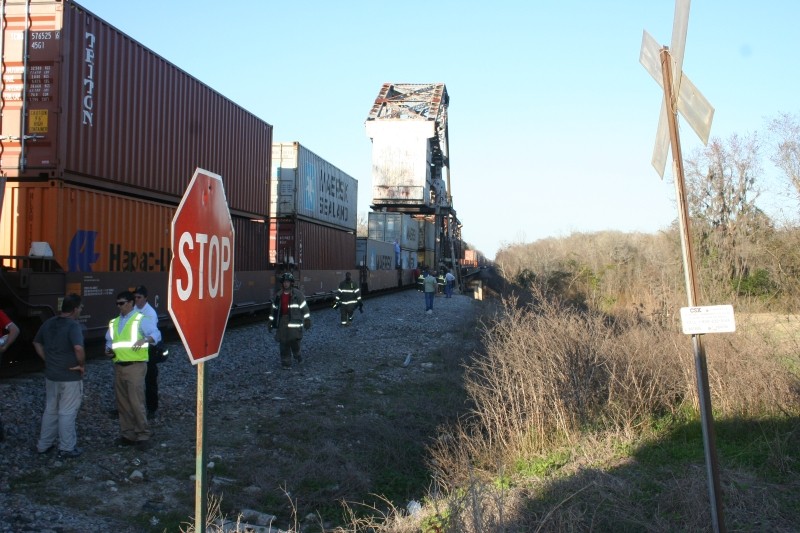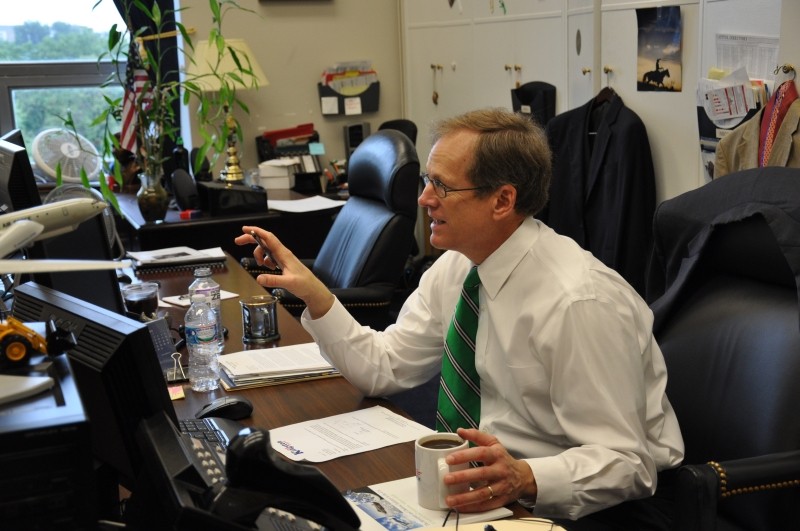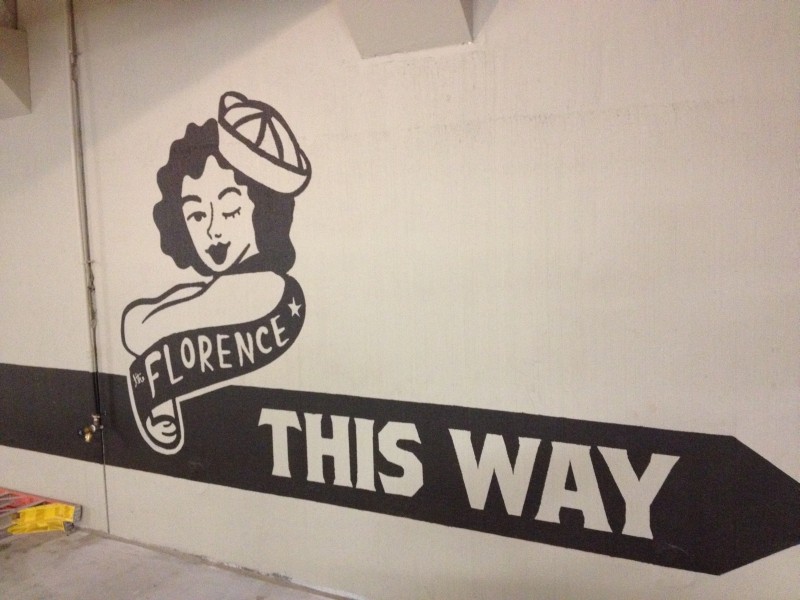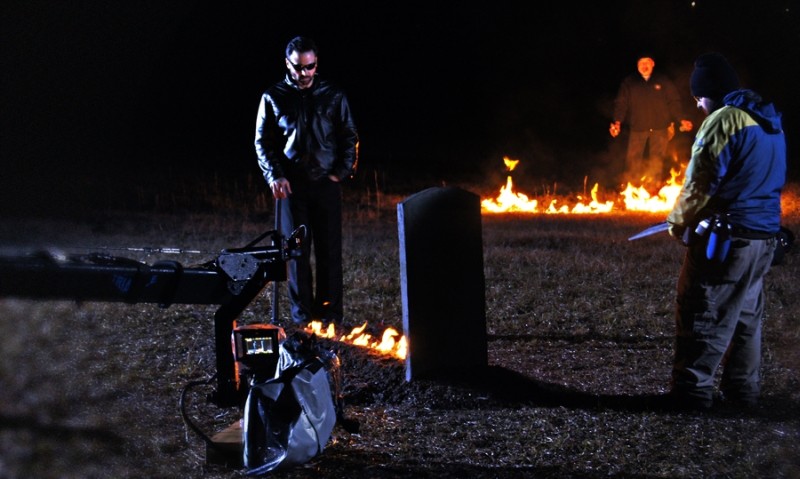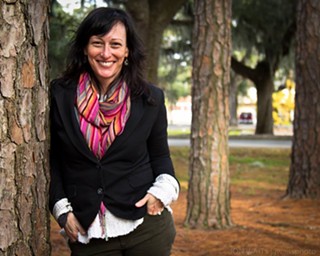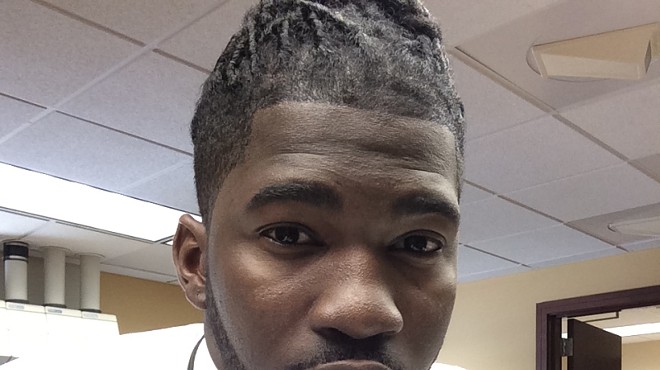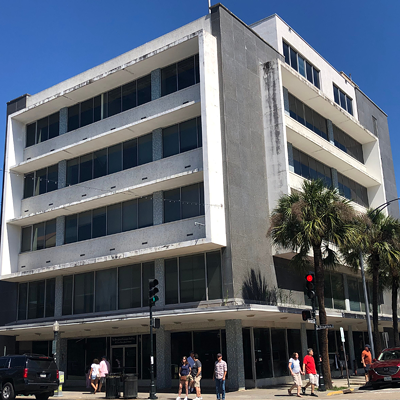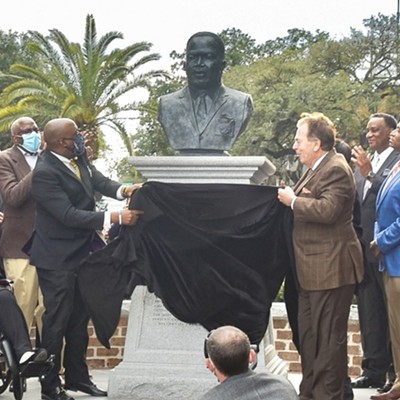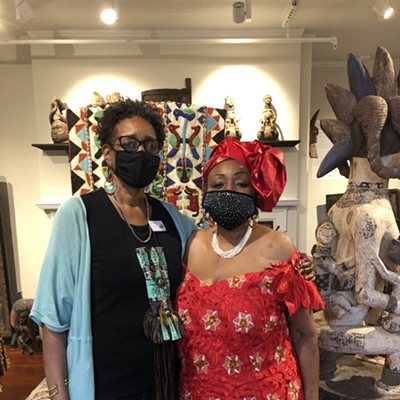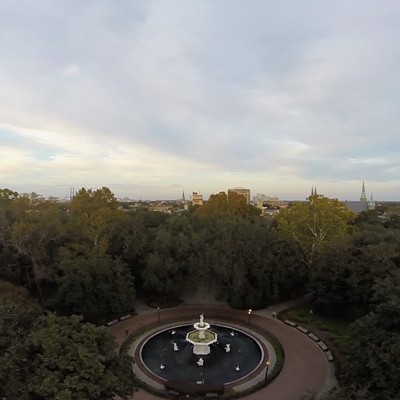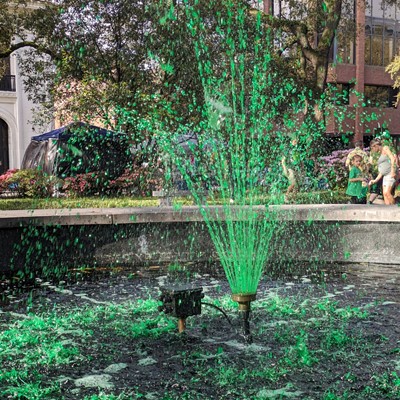1: FULL METAL JACKET
Gun violence has been a part of Savannah life and lore for decades. But never before has there been such a high volume of shootings over such a sustained period of time as in 2014.
According to official reports, through Dec. 13 there were 189 aggravated assaults with a gun this year in Savannah/Chatham Metro’s jurisdiction, resulting in 29 deaths.
(The numbers are already higher; there were three more shootings and two more homicides just this past weekend.)
But for most of us, the shock came less from the number of attacks than from their sheer brazenness.
For some stretches over summer and fall, there was at least one shooting per day, often several. In some cases one shooter claimed several victims.
There were broad-daylight home invasions. At least three small children were hit by bullets. There was even a running gun battle on a whole block of Gordonston.
Only two precincts account for roughly three quarters of the bloodshed. By far the most deadly was Central Precinct, with 74 gun assaults and 14 murders.
Central was followed by the misleadingly named Islands Precinct—which includes the blood-soaked Eastside—with 44 gun assaults and 6 homicides.
After years of denying the existence of street gangs in Savannah, police finally acknowledged gang activity was responsible for some of the violence, mostly in struggles over drug turf.
Given the oddly underreported allegations of police protection of drug dealers during the tenure of former Chief Willie Lovett (who has his own entry in the Year in Review, same with Charles Smith pictured above), it seems prudent to ask how police corruption may have directly contributed to that drug trade—and therefore to the gun violence.
We wonder how many candidates challenging incumbents in the 2015 City elections will bring this up.
Other factors are less quantifiable. Savannah police have long maintained that inner city communities in general and shooting victims in particular often simply refuse to cooperate with police, making it much harder to prosecute.
Savannah’s dire poverty rate, especially in the African-American community—stubbornly unchanged with the ascension of near-total black political power in City government—is another contributing factor, one made all the more stark given the relatively quick recovery from the recession in the city at large.
The new addition of “Shot Spotter” technology, which passed all initial tests, offers a glimmer of hope that police will be able to respond more quickly to shootings after they happen.
But until we can short-circuit the process, and stop the triggers from being pulled in the first place, the problem is likely to plague our streets for some time to come.
To that end, the City will pay crimefighting consultant David Kennedy a quarter million dollars to coordinate advanced policing strategies designed to do just that. —JM
2: 2014 BC
In years to come, we may talk about Savannah “Before Ben Carter” and “After Ben Carter.”
Savannah has no shortage of Scrooge-like upper crust rich folks, most of whom are notoriously miserly. But probably not since the age of the carpetbaggers after the Civil War has Savannah seen one person so wealthy spending cash so freely in making big changes in so short a time.
In Ben Carter’s case though, we have not a Yankee interloper but born-and-bred Southern money, a high-profile Atlanta developer and high-stakes player not afraid to take a risk—or to call attention to himself.
Now with acquisitions in the dozens of properties on and around Broughton Street—most of them bought and closed on in blocks of transactions—Carter has within the space of a single year essentially paid his way into becoming a co-equal player with City government downtown, with the expected blowback and resentment from those of us still forced to play by little-guy rules.
Aside from the public’s very valid concerns about locally-owned businesses being forced off of Broughton due to increasing rents—already at exorbitant levels before his arrival—Carter seemed to go out of his way to push people’s buttons here.
From erecting unapproved public art on undeveloped lots and unapproved planters on Broughton curbsides... to strong-arming City review boards to bend the rules in his favor... to docking his enormous yacht right on the riverfront... to being frontman for a controversial Tax Allocation District to benefit his properties... to bullying reporters... to rapidly becoming a fixture in downtown nightlife... many of Carter’s actions seemed cartoonishly arrogant and narcissistic, and came as a shock to a Southern town otherwise steeped in self-effacing manners.
But in fairness it also must be said that Carter has put his money where his mouth is, sponsoring and supporting enough popular, well-received events to send the message that he’s willing to part with his own money for the public good in ways that other Savannah One Percenters are not.
And perhaps that will be his lasting, and positive, legacy. —JM
3: RIP SARAH JONES
From now on, the word “Midnight” referring to unfortunate Georgia-filmed movies won’t always refer to the notoriously lame Clint Eastwood film based on John Berendt’s book.
On Feb. 20, 27-year-old film crewmember Sarah Jones was killed, and seven others injured, when a freight train approached a train trestle in Wayne County, Ga., where they were filming a “dream scene” for the scheduled Gregg Allman biopic Midnight Rider.
What followed in the tragedy’s aftermath was a revealing insight not only into Hollywood arrogance, chiefly in the form of director/producer Randall Miller, accused of sending the crew unprepared out onto that live trestle, but of the local good ol’ boy system as well.
Miller and his wife, producer Jody Savin, already had a history in Savannah with their production of CBGB, which filmed downtown in 2012.
According to observers in the know, including aggressively ousted former Savannah Film Services Director Jay Self, starstruck local muckety-mucks enabled Miller’s megalomania and self-labeled “guerrilla filmmaking”—a lethal combination which may have contributed to tragedy on the Midnight Rider set a year later.
A Connect Savannah investigative report revealed that the Savannah Economic Development Authority had a cozy relationship with Miller’s unfortunately named production company, Unclaimed Freight, that bordered on conflict of interest, and that Miller’s initial claims that the fateful shoot on the Doctortown Trestle was just a “camera test” didn’t exactly pass the smell test.
In the wake of Jones’s death, an industry-wide effort was made both to enhance on-set safety measures and to ensure crew members could report safety problems without threat of reprisal.
Miller, Savin, Midnight Rider production manager Jay Sedrish and first assistant director Hillary Schwartz have been indicted for involuntary manslaughter and criminal trespass.
Trials begin in March 2015 in Jesup.
The Jones family reached an undisclosed civil settlement with Miller and other defendants.
As for the movie itself, Gregg Allman officially divested all ties with Unclaimed Freight and the Midnight Rider script. Strangely, Miller and Savin—who as recently as August insisted they would keep making the film—are now working on a different movie under a different name, but with an oddly similar plot.—JM
4: FALL OF THE HOUSE OF LOVETT
When he was appointed Savannah/Chatham Police Chief in 2010, Willie C. Lovett seemed the answer to everyone’s prayers: A no-nonsense longtime local police veteran, an African American top cop in a city with a high volume of black-on-black crime.
Lovett seemed to fit the bill both politically and in police work, as City Council and then-City Manager Rochelle Small-Toney were able to tell constituents they’d not only installed Savannah’s first black police chief, but one singularly well-equipped for the job.
What ended up happening was the stuff of a crime thriller by Scorsese or Coppola, and in some ways equally implausible.
Fast forward four years from his appointment, and Lovett was found guilty this past November of several felonies involving skimming proceeds of illegal gambling operations run by a man with the colorful name of “Red” Roach and protected by Lovett’s officers.
But the verdict was oddly anticlimactic.
Most observers assumed Lovett was more likely to get karmic comeuppance not from the petty carnie scam, but from the high-profile sexual harassment claim of another officer, Trina Mayes, which caused him to abruptly resign in 2012.
Or maybe from being fingered by a specially-commissioned outside report as corrupting Internal Affairs in order to protect drug shipments to Savannah streets.
In any case, the ripple effect of Lovett’s reign of corruption involved several other high-profile cases involving former officers—some his handpicked cronies, some his nemeses.
His previously mentioned alleged adulterous paramour, Trina Mayes, was fired after another of her love affairs was revealed, this one with a convicted drug dealer.
Malik Khaalis, one of the allegedly corrupt officers apparently put on the Counter Narcotics Team by Lovett to serve as a mole, was ousted from the force in February and faces charges of lying about his role on CNT.
Longtime Lovett loyalist Capt. Cedric Phillips—accused of literally pimping female companionship for the chief —was allowed to resign “under a pending investigation.”
As for Trina Mayes’s hapless husband, LaPrentice Mayes, he was fired for “unrelated misconduct,” though he was allegedly involved in the fairground scam that Lovett apparently profited from. —JM
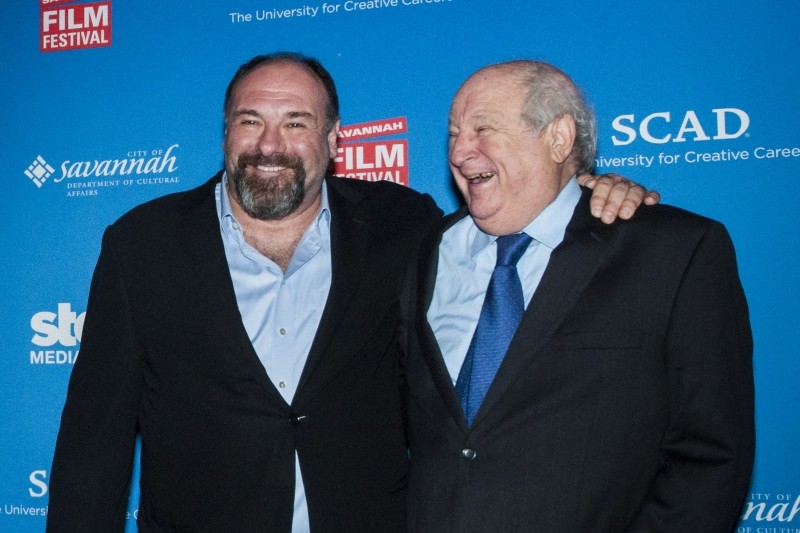
5: ZAREM VS. SCAD IN FILM FEST FLAP
The 2014 Savannah Film Festival presented its usual line-up of formidable first-run films and Hollywood names in October, including current box office smash The Imitation Game and visits by Mike Myers and Norman Reedus.
But there was a noticeable absence from the red carpet this year: P.R. legend and longtime SCAD ally Bobby Zarem.
Zarem—affectionately known as “B.Z.”—is the Savannah native and New York publicist behind many a blockbuster career. His big-name connections are credited with bringing the likes of Oscar winners Michael Douglas and Jeremy Irons to town for 15 years of the SCAD-sponsored filmfest, and SCAD honored Zarem with a Lifetime Achievement Award in 2010.
Rumors about a contentious split swirled during the festival and caught the ear of national media. On Nov. 4, The New York Post ran an item on Page Six that Zarem had “been dumped” by SCAD.
Ten days later, columnist Richard Johnson followed up in the same space with a different story: Zarem had been fired for whistleblowing about a series of sexual assaults committed by a SCAD employee.
Zarem claims the college then mounted a cover-up that included transferring the alleged perp to its Hong Kong campus; SCAD claims it checked thoroughly into the incidents but didn’t have the necessary information to press any charges.
“SCAD investigated,” Foy Devine, the school’s legal representative, told Page Six. “However, Mr. Zarem declined to give the names of anyone who could corroborate his statement.”
Zarem told Connect last week that he didn’t want to reveal names to the administration in order to protect the victims but will cooperate if there is a federal investigation.
While details of any further legal action remain unclear, Zarem has retained Tab Turner, the lawyer best known for winning a multi-million dollar lawsuit against Ford over the 187 deaths caused by defective Explorers. He reports that he has been approached by several national media outlets but can’t discuss any details:
“Basically what I’m telling everyone is that they need to talk to my attorney.” —JLL
6: HARBOR DREDGE ON EDGE OF REALITY
Shovels are at the ready: After more than 15 years of engineering studies, environmental lawsuits and ballooning budgets, the Savannah Harbor Expansion Project finally received its blessing from the feds in 2014.
Congress passed The Water Resources Reform Development Act in May, which raised SHEP’s spending cap and authorized the dredging along with 33 other aquatic infrastructure projects throughout the country, including port expansions in Boston, Charleston and Jacksonville.
President Obama signed the WRRDA in June, though the bill didn’t actually allocate any funding for the $706 million project that entails dredging the Savannah River from 42 to 47 feet and more than $300 million in environmental mitigation.
Gov. Nathan Deal had already squirreled away some $266 million of state taxes to jumpstart the Big Dig. That cache of cash became usable in October, when the GPA and the U.S. Army Corps of Engineers finalized the official Project Partnership Agreement (PPA) that allowed the Corps to start taking bids on two contracts: One to dig the river’s outer channel and the other to begin construction on the Speece Cones that make up the dissolved oxygen injection system. As of December, neither contract has been awarded.
Under the terms of the lawsuit settled against the Corps in 2013 by the Southern Environmental Law Center and the Savannah Riverkeeper, the Speece cones must be proven that they are able to provide enough oxygen to prevent the death of living organisms before dredging can move forward.
The push to deepen multiple ports along the East Coast has been spurred by the employment of massive post-Panamax (PPMX) vessels by the shipping industry. The Georgia Ports Authority has already installed several Super PPMX cranes in anticipation, and the feds have promised to make up the project’s $440 million difference.
But last week Congress sent the White House a $1.1 trillion spending bill that included a paltry $1.52 million in construction kickdowns—less than one percent of the $250 million the Corps plans to spend in the first year. —JLL
7: JOLENE IN, JACK OUT
The long-shot candidacy of Jolene Byrne for School Board President turned out not only to defy all conventional political wisdom, being the case of a white single mom with zero political experience successfully bidding for what might be the most politically thorny elective office in all of coastal Georgia.
It was also a history-making, groundbreaking template for the kind of progressive, positive, and forward-looking candidacy that Savannah is going to desperately need more of in the 21st century.
Certainly, Byrne profited from facing an opponent who was a perfect foil: Dave Simons, longtime GOP political operative known for his Karl Rove-style swagger, who seemed to go out of his way to point out that he had no personal stake in the public school system and just wanted to run it “like a business.”
But hey, luck is a part of any competition, whether sports or cards or politics.
What counted was that Byrne capitalized on her good luck, and in the process gradually and gracefully grew into her role as front-runner, until not even the possibility of an African American electorate solidified behind runoff competitor Rev. Chester Ellis proved insurmountable.
Byrne will be sworn into office in a few weeks, and then her real challenge begins.
As for longtime local congressman Jack Kingston, he pulled off something even more miraculous: Parlaying over two decades as a consummate Congressional insider into public perception as a maverick outsider to the very end.
First elected to the House of Representatives two years before Newt Gingrich’s GOP takeover of Congress in 1994, Kingston capitalized on that populist sentiment while conveniently ignoring some of its basic tenets—like, oh say, term limits!
Along the way Kingston became known for his accessible demeanor, his strong support of local military facilities, his very un-Republican embrace of pop culture, and a few cringeworthy moments—such as going on the Bill Maher show questioning the patriotism of Democrats who don’t wear a U.S. flag pin while himself not wearing one, or suggesting that low-income children work as school janitors to pay for their school lunch.
Kingston’s career ended in an uncharacteristic gamble for a politician who owed his long career in no small part to gerrymandered white suburban districts: He left a seat he could have kept for the rest of his life to seek the U.S. Senate seat vacated by the retiring Saxby Chambliss.
But local liberals won’t have Kingston to kick around anymore. The ultimate insider fell victim in the GOP runoff to an even more “made guy”: Dollar General CEO and notorious job outsourcer David Perdue, cousin of former Ga. Gov. Sonny Perdue.—JM
8: SHABAZZ SAYS SNITCHES GET STITCHES
The shooting of African American felon Charles “Mista Dee” Smith by a white police officer on Augusta Ave. during an arrest was controversial enough, especially on the heels of a similar racially-tinged officer-involved shooting in Ferguson, MO.
Mayor Edna Jackson was magnificently graceful under pressure in her largely successful bid to defuse the tension on the Westside, calm escalating tempers and avoid national headlines.
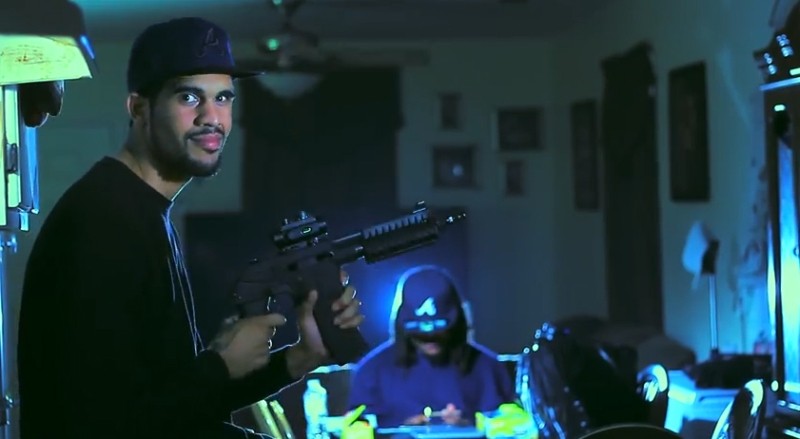
But adding fuel to the fire in an almost literal sense was Chatham County Commissioner Yusuf Shabazz, a former (current?) member of the New Black Panther Party who returned to his inflammatory roots by urging a boycott of the convenience store where Smith was apprehended, a store not even in Shabazz’s district.
His reasoning, if that word even applies here? That the store owner had “cooperated with police” by alerting them to Smith’s presence.
In Shabazz’s world, cooperating with police is a bad thing, meaning he thought the store owner was a racist who was complicit in police brutality against people of color.
The ironies: The store owner is himself a person of color, and the people most negatively impacted by the “snitches get stitches” mentality are almost always...people of color.
While off-the-record other elected officials, white and black, including Mayor Jackson, were furious with Shabazz, very few dared to openly criticize his behavior—possibly because his wife, Estella Shabazz, serves on City Council? —JM
9: FOODIE SCENE GETS FABULOUS
Savannah’s discerning palettes had plenty of reason to rejoice this year: Celebrity chefs staked claim and reputation on long-awaited high-end restaurants while familiar faces branched out with delicious new flavors:
In June, James Beard Award-winning chef and Food Network personality Hugh Acheson sent foodies into a tizzy with the opening of The Florence in the former ice factory on Victory Drive. An instant sensation for its regionally-sourced, Italian-influenced New South cuisine, the elegant bar has also fast become the place to see and be seen by Savannah’s movers and shakers. While daily operations are overseen by Acheson protégé Kyle Jacovino, it took a celebrity chef to finally satiate the hunger for fine dining in midtown. The menu changes often; right now we’re all about the rabbit ravioli with foraged mushrooms.
Savannah’s busiest chef and perennial Best of Connect winner Roberto Leoci has apparently achieved the art of teletransportation with the May opening of Pacci, inside the sleek Brice Hotel now anchoring the east end of Bay Street. Playing on the flavors that made Leoci’s Trattoria a success, Pacci amps up coastal Italian classics with a certain culinary daredeviltry (hi there, Tuscan Bean hummus and Blueberry Duck.) Don’t miss the special event menus and Wednesday evenings at the community table.
Savannahians almost broke Instagram in September when they began posting photos of their delectable brunches courtesy of The Collins Quarter. The Aussie-based eatery brings farm-fresh salads, burgers and breakfast fare to the hopping corner of Oglethorpe and Bull (though if you want an egg on anything, you’d better order before 11am.) CQ’s endless popularity with both locals and tourists means you might need to wait for a table, but the coffee bar serves gourmet hot drinks right from the window. A dinner menu is expected in 2015, but until then, try the smashed avocado toast with a lavender mocha.
The fabulous façade of The Grey was finally unveiled on MLK Blvd earlier this month after more than a year of anticipation. Owner John Morisano dropped major capital on the former Greyhound Bus station that’s been empty since beloved restaurant Metropole closed in 2002 and spared no expense in transforming—and preserving—the historic space into an Art Deco dream. Most importantly, the venture capitalist has invested in his kitchen staff: Executive chef Mashama Bailey (formerly of Prune in NYC) joins forces with local hero and sous chef Theo Smith (formerly of Café Florie) for an eclectic menu of locally-sourced victuals; be sure to save room for dessert by The Chocolate Lab’s Kelly Spivey.
Also in 2014: Savannah’s First Family of Asian Cuisine, Ele and Sean Tran, put another jewel in their crowns with Flying Monk Noodle Bar on Broughton...We mourned the closing of Brasserie 529 in May until we learned that owners April and Joe Roelle merely went into a culinary cocoon to reemerge as the casually delectable Liberty Street Grill...Aiming to fill the vacuum of traditional French fare in Savannah is 39 Rue de Jean, a Charleston institution that’s coming (eventually?!) to West Oglethorpe. —JLL
10: PUBLIC ART UPS & DOWNS
It was a prolific year for the paintbrushes of See Savannah Art Walls, the organization that seeks to raise the city’s profile in the global art dialogue by transforming blank buildings into objets d’art.
Several SeeS.A.W.-sponsored murals and projects sprang up in 2014, most recently at 40Space, the collection of creative commercial spots for rent at the corner of 40th and Drayton, where artistic dream team Matt Hebermehl and Jose Ray rolled out a splendid Savannah scene on the cinderblocks.
Right around the corner at Green Truck Pub, the old drive-thru sign that served as the site of Savannah’s first crowdsourced yarnbomb has become a SeeS.A.W. polestar, debuting a fascinating installation of artist Mike Williams’ artfully-arranged odds and ends in February.
Public art also punched past Victory Drive for the first time this year: SeeS.A.W. associate artist and onetime Savannahian Kellie Walker returned from L.A. in July to help Hebermehl make more mural magic at 66th and Paulsen, the site of Kayak Kafé’s midtown location. The geometric motif in a multitude of shades also served as the setting for the cover of Connect the week of Sept. 24.
This summer Hebermehl and Ray also collaborated with Loop It Up Savannah creative director Molly Lieberman for another mural at the West Broad YMCA, where Lieberman oversees the arts program and community garden.
The artists held a series of workshops at the Y, and more than 30 children contributed ideas and drawings that resulted in the shiny, happy scenes now overlooking the beds of kale and lettuce.
“We gave them the prompt to draw what the YMCA meant to them, what the neighborhood meant to them, what their favorite activities were,” Hebermehl told Connect. “We took the drawings, put them on the wall and the kids arranged the composition.”
To help promote the A-Town Get Down Festival in February, the Y kids helped the Savannah Yarnbomb Squad dress up a trio of chicken-wire sculptures supplied by public art godfather Jerome Meadows for a tour of the city on the back of a flatbed truck.
In a turn of artistic irony that can only be described as “super meta,” the child-like figures turned out to be prototypes from Meadow’s 1992 Yamacraw Village sculpture installation, circling the attention back to the challenge of public art in underserved neighborhoods.
“Who is the ‘public’ that public art is designed to serve?” Meadows asked rhetorically at a lecture about public art sponsored by ARC Savannah at the Jepson in July.
Mural morale suffered a setback in October, when bulldozers demolished the colorful wall at Habersham and 34st streets to make way for a new apartment complex. Dubbed the “Muralcle on 34th Street,” its wondrous layers were laid down in phases by artists Katherine Sandoz, Troy Wandzel and Adolfo “Inope” Alvarado at the behest of See S.A.W. in 2012.
The kaleidoscopic wall was the first legal public art mural in the history of the City of Savannah thanks to SeeS.A.W.’s founders. Their activism and authorship convinced City Hall to adopt a mural policy under the MPC’s Site and Monument Commission, and the process of applying for a public art permit is open to all—an opportunity we hope more Savannah’s artists will remember in 2015! —JLL
11: WHEN HOTELS ATTACK
You can definitely say Savannah came out of the recession in fine form. Too fine a form, perhaps, if the volume of new hotel projects springing up like resurrection fern on a live oak is any indication.
But it’s not just the number of new hotels—it’s their suddenly ginormous, sun-and-street blotting size, by local standards anyway.
We all know that in the real world those with more money get more leeway. But in one of the most egregious cases of big money running roughshod over local rules, a new hotel proposal for West River Street by well-regarded local developer Richard Kessler ended up being literally double the allowed number of floors—six compared to three.
Simply put, the big money folks have learned to bypass the local review boards and go directly to City Council. There, all they have to do is promise a few more minimum-wage jobs to get the key to the City handed to them and just about any pesky historic district guideline waived.
The situation became nearly comical when local architect and former County Commissioner Patrick Shay, no stranger to backroom politicking and in the midst of some rule-massaging of his own on a hotel project on the other end of River Street, spoke out against the Kessler variance in a SMH moment.
But in the long run the hotel arms race isn’t just a contest to see which local egos can swing the biggest T-square. It’s a threat to the very thing that draws all those visitors to Savannah in the first place: A respectfully well-preserved historic district completely unique in the world.
Or once completely unique, anyway.—JM

12: CHIEF LUMPKIN AND THE DOOMED POLICE MERGER
In the wake of Chief Lovett’s resignation and later conviction, City Manager Stephanie Cutter embarked on a nationwide search for a new Metro Police Chief.
No one questions the qualifications of the winner of that search, new chief Joseph “Jack” Lumpkin, longtime Athens/Clarke County top cop. But Lumpkin comes in at a particularly sensitive and challenging time—and not only because of all the gun violence.
Indeed, Lumpkin’s hiring—or more specifically, the City’s insistence that they could hire a new chief with little or no County input—is part of what is leading to the breakup of the decade-old police merger.
Simply put, just as Savannah faces unprecedented violent crime, the County Commission voted to exercise its option to leave the police merger. Unless last-minute negotiations work out—which is increasingly unlikely—by 2016 there will once again be two police departments in Savannah: One in the crime-plagued city limits, and another writing speeding tickets in unincorporated Chatham.
Want to make any bets as to whether the City will raise taxes when that happens?
Even within City leadership, many observers blame the City of Savannah for the gross failure of leadership. (In an epic rant on his Facebook page, Alderman Tony Thomas laid the blame squarely at his colleagues’ feet.)
Though the City blames the County’s unwillingness to honor a funding formula, there was a way forward to negotiate on that. But what the City was apparently unwilling to negotiate was having final say in choice of a chief—and perhaps most ominously, control over the Counter Narcotics Team, focal point of corruption during Lovett’s tenure. —JM
13: THE BUCK FINALLY STOPS ON TRUMAN PARKWAY
After almost a century of debate and debacles, Phase V of the Harry S. Truman Parkway opened in its fully paved glory this March, connecting downtown with the far reaches of the Abercorn Extension.
Once known as the Casey Canal Parkway Project, the idea of an “automobile” route along the southside drainage path was first proposed in 1925 by Walter Stillwell (grandfather of current City Attorney Brooks Stillwell) and was taken up by city leaders in the 1950s. Engineering firm Thomas & Hutton recommended it run from Henry Street to Derenne, which was practically the edge of civilization in 1954.
The city acquired the necessary land in 1955, but the two-lane highway project soon taxed the public’s patience.
“When do you think this project (Casey Canal Parkway) will materialize?” asked Alderman Jack Rauers at a city council meeting in February 1958.
“When we’re in Bonaventure Cemetery,” replied Alderman, and later mayor, Malcolm Maclean. (A prescient remark; he died in 2001.)
Over the decades, proposed costs ballooned as the parkway was rerouted and renamed. In the late ‘60s, Savannah Mayor J.C. Lewis proposed that the parkway be named for segregationist Georgia Gov. Lester Maddox. Thankfully, that honor went instead to President Truman, a champion of transportation infrastructure. A 20-cent toll was rejected by voters in 1980s, and a pair of bald eagles stalled progress for two years when the proposed parkway crossed their habitat inside the Forest City Gun Club.
The project finally broke ground in 1990s, but the Truman Parkway remained unfinished for nearly two decades.
Former state senator, city alderman, Chatham County Commissioner and Georgia DOT commissioner Tom Coleman is roundly credited for his tireless advocacy for finishing the Truman. After almost 40 years of dedication to civic life and this project in particular, Coleman passed away this June, just a few months after the ribbon was cut.
The final price tag came in at $186 million, and island and downtown residents now have a mostly stoplight-free route to Southside as well as a direct link to I-95. We just hope the Truman Park Bike Trail that’s supposed to run parallel to the parkway doesn’t take anywhere near as long. —JLL
14: JAMIE'S SILVER HAMMER
Conversation stopped and jaws dropped all over Savannah during halftime of the Super Bowl this year when one of the most unusual TV ads ever aired came on.
Local attorney Jamie Casino, starred in, directed and wrote a two-minute advertisement that seemed more like a trailer for some kind of awesome Avengers-meets-Lord of the Rings masterpiece.
The bizarrely compelling plot, unfolding in twisted quasi-religious dream visions with a heavy metal soundtrack, involved Casino renouncing his old ways defending criminals, avenging his brother’s death, and something-something smashing the crap out of a gravestone with a big-ass hammer.
The inscrutable spot garnered national attention and was possibly the only thing which could have taken people’s attention off the execrable performance of Peyton Manning and the Denver Broncos in the actual game—which became a total afterthought the first nanosecond after Casino’s ad finished.
Best of all? We hear Jamie’s working on a follow-up to possibly air during this February’s Super Bowl. We have no idea how he can possibly top himself, but we can’t wait!—JM

